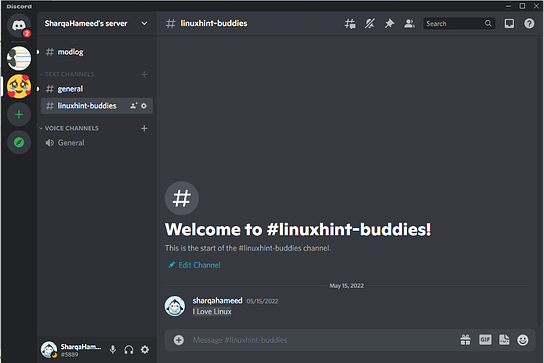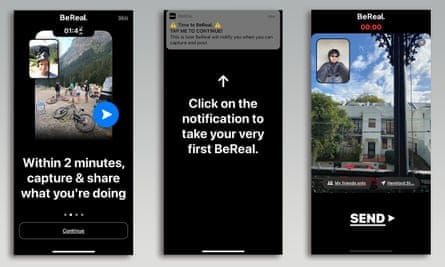Creating products that stick (and how to do it)
Creating products that stick (and how to do it)The one product framework you need today
Hey friends, Before we get into this post, two quick announcements:
Now let’s get into this week’s post. Creating products that stick (and how to do it)Today, I’m going to discuss a powerful framework for creating products that stick, become routine and have built-in growth engines. But first, why adopt a framework for building products that stick? It’s never been easier to build a product. It’s faster than ever and cheaper than ever to get something off the ground. No-code tools make it easy to stand on the shoulders of giants. The result is launching a product is 1000x easier than it was 10 years ago. Yet, it’s never been harder to create a product that sticks with people. You’ve built a product that sticks when your product stands out and is overwhelmingly valuable. This framework has reframed how I build products, and might be the same for you. The single-player vs multiplayer framework: Single-player A single-player product is a product that you get value by yourself. You don’t need to use it with friends for it to be very valuable. The more sticky your single-player experience is, the more trust you build with your users. Example: Things, the award winning to-do list manager. You don’t need friends for a high-end to-do list. You just need it to be super valuable and feel good. Example: Zero, the intermittent fast tracking app. You don’t need friends for a purpose-built fast-app. You just need it to help you track your fasts, give you analytics, reminders and level you up. The ah-ha moment of single-player is the eureka moment when you could see yourself making it a part of your daily or weekly rituals and habits. Multiplayer: Example: Discord, group chatting app. You need a group for a group chatting app to work. That’s why Discord (or Slack) have intricate onboarding flows for new admins to invite their friends/communities into the product. They know that the “ah-ha” moment happens when the community is there. Example: BeReal, post a photo everyday with front-facing and rear facing camera. You need a network of friends to get feedback on your photos. That’s 90% of the fun of the product. The ah-ha moment means the eureka moment when you want to use this products with your friends, colleagues or community. Single-player and multiplayer These are products that combine single-player (retention) and multiplayer (word-of-mouth). This is where you eventually want to get to. Example: You could use Figma solo to be creative and draw interfaces on a Sunday AM. Or you could collaborate with other designers on a multiplayer canvas. Example: WW uses a tracker (single-player) couples with community (multiplayer) both in IRL (events and virtual (app). The most common question I get about this framework:
Well, first you start with the community. You find an underserved niche that you feel you understand them and speak to them in a way that resonates. Then, realize that the holy grail is combining single-player and multi-player. For example, I first heard about Figma from a designer that had switched from Adobe XD. He had built significant trust with Figma as a single-player, recently moved to multi-player and the guy was literally screaming from the top of his lungs on rooftops about how amazing Figma was. That’s the power of single + multi in a nutshell. However, it is usually easier to begin with single-player. Building multiplayer is more complex. You need to have liquidity (ie: friends needs to be online for the ah-ha moment to be most fertile). I believe multiplayer mode is the most misunderstood part of the internet today. Way more upside. That’s why you’ll see a multiplayer-first business like Figma sell for $20b. TLDR; If you’re building a new product, ask yourself, what part of this is single-player, what part of this is multiplayer? Why does it make sense to start single versus multi? It’s an important question because if you nail it, finding product/market fit becomes easier and customers find your instead of you finding customers. Add this one to your product framework toolkit. Thank you for reading. If you enjoyed this piece, share it on Twitter etc. Others might find it interesting too. And subscribe to the newsletter if you haven’t already. 35,000+ others do so they don’t miss the next post. If you liked this post from Late Checkout - a Substack by Greg Isenberg, why not share it? |
Older messages
The Fast-Foodification of Everything
Sunday, September 4, 2022
And how you can stand out on the internet
Your Grandma's Showerhead
Friday, May 27, 2022
Changing my showerhead has changed how I think about life and business. In the early 2000s, it felt like everyone became obsessed with rainfall shower heads. All of a sudden, the vibe was that if you
See you tomorrow
Saturday, May 21, 2022
It's good for you
Funeral of a CryptoPunk
Thursday, March 17, 2022
What February 9th 2032 could look like
A Day in the Life of a Crypto-Fueled Future
Wednesday, November 17, 2021
The year is 2030. You live in rural Montana in a cabin with your spouse and 3 children. You wake up, pour yourself a cup of hot coffee, and check your social networks to see what your favorite creators
You Might Also Like
Open Your Mouth & Give The Phone To Granny ☎️
Tuesday, December 3, 2024
A cheery weekend number͏ ͏ ͏ ͏ ͏ ͏ ͏ ͏ ͏ ͏ ͏ ͏ ͏ ͏ ͏ ͏ ͏ ͏ ͏ ͏ ͏ ͏ ͏ ͏ ͏ ͏ ͏ ͏ ͏ ͏ ͏ ͏ ͏ ͏ ͏ ͏ ͏ ͏ ͏ ͏ ͏ ͏ ͏ ͏ ͏ ͏ ͏ ͏ ͏ ͏ ͏ ͏ ͏ ͏ ͏ ͏ ͏ ͏ ͏
🗞 What's New: Bluesky might be your next website traffic goldmine
Tuesday, December 3, 2024
Also: ChatGPT often gets news sources wrong ͏ ͏ ͏ ͏ ͏ ͏ ͏ ͏ ͏ ͏ ͏ ͏ ͏ ͏ ͏ ͏ ͏ ͏ ͏ ͏ ͏ ͏ ͏ ͏ ͏ ͏ ͏ ͏ ͏ ͏ ͏ ͏ ͏ ͏ ͏ ͏ ͏ ͏ ͏ ͏ ͏ ͏ ͏ ͏ ͏ ͏ ͏ ͏ ͏ ͏ ͏ ͏ ͏ ͏ ͏ ͏ ͏ ͏ ͏ ͏ ͏ ͏ ͏ ͏ ͏ ͏ ͏ ͏ ͏ ͏ ͏ ͏ ͏ ͏ ͏ ͏ ͏ ͏ ͏
5 tools I used to grow Starter Story to $1M
Tuesday, December 3, 2024
Read time: 47 sec. “What tools do you use to build your business?” ^^^ I get this question all the time. So today, I'm finally spilling the tea: The 5 essential tools I used to grow Starter Story
just announced: The 2024 Digital Health 50
Tuesday, December 3, 2024
meet the 50 most promising digital health companies across the globe, and learn how they're shaping the future of healthcare. Hi there, Our analyst has unveiled the 2024 Digital Health 50 – the
BSSA #110 - Why, What and How to track your data?
Tuesday, December 3, 2024
December 03, 2024 | Read Online Hello! I hope your Black Friday was good for your app. We're in December, for my app (and many others) December isn't usually the best month (I hope it's not
[CEI] Chrome Extension Ideas #168
Tuesday, December 3, 2024
ideas for developers, twitter, movies, and events ͏ ͏ ͏ ͏ ͏ ͏ ͏ ͏ ͏ ͏ ͏ ͏ ͏ ͏ ͏ ͏ ͏ ͏ ͏ ͏ ͏ ͏ ͏ ͏ ͏ ͏ ͏ ͏ ͏ ͏ ͏ ͏ ͏ ͏ ͏ ͏ ͏ ͏ ͏ ͏ ͏ ͏ ͏ ͏ ͏ ͏ ͏ ͏ ͏ ͏ ͏ ͏ ͏ ͏ ͏ ͏ ͏ ͏ ͏ ͏ ͏ ͏ ͏ ͏ ͏ ͏ ͏ ͏ ͏ ͏ ͏ ͏ ͏ ͏ ͏ ͏
A personal note on SaaS & sleepless nights
Tuesday, December 3, 2024
Starting a SaaS is tough. ͏ ͏ ͏ ͏ ͏ ͏ ͏ ͏ ͏ ͏ ͏ ͏ ͏ ͏ ͏ ͏ ͏ ͏ ͏ ͏ ͏ ͏ ͏ ͏ ͏ ͏ ͏ ͏ ͏ ͏ ͏ ͏ ͏ ͏ ͏ ͏ ͏ ͏ ͏ ͏ ͏ ͏ ͏ ͏ ͏ ͏ ͏ ͏ ͏ ͏ ͏ ͏ ͏ ͏ ͏ ͏ ͏ ͏ ͏ ͏ ͏ ͏ ͏ ͏ ͏ ͏ ͏ ͏ ͏ ͏ ͏ ͏ ͏ ͏ ͏ ͏ ͏ ͏ ͏ ͏ ͏ ͏ ͏ ͏ ͏ ͏ ͏ ͏
Growth Newsletter #228
Tuesday, December 3, 2024
Why you buy sh*t you don't need ͏ ͏ ͏ ͏ ͏ ͏ ͏ ͏ ͏ ͏ ͏ ͏ ͏ ͏ ͏ ͏ ͏ ͏ ͏ ͏ ͏ ͏ ͏ ͏ ͏ ͏ ͏ ͏ ͏ ͏ ͏ ͏ ͏ ͏ ͏ ͏ ͏ ͏ ͏ ͏ ͏ ͏ ͏ ͏ ͏ ͏ ͏ ͏ ͏ ͏ ͏ ͏ ͏ ͏ ͏ ͏ ͏ ͏ ͏ ͏ ͏ ͏ ͏ ͏ ͏ ͏ ͏ ͏ ͏ ͏ ͏ ͏ ͏ ͏ ͏ ͏ ͏ ͏ ͏ ͏ ͏ ͏ ͏
How GiveDirectly increased donations by over $3 million/year through experimentation
Tuesday, December 3, 2024
Wins, misses, and lessons from GiveDirectly's donation-optimizing journey ͏ ͏ ͏ ͏ ͏ ͏ ͏ ͏ ͏ ͏ ͏ ͏ ͏ ͏ ͏ ͏ ͏ ͏ ͏ ͏ ͏ ͏ ͏ ͏ ͏ ͏ ͏ ͏ ͏ ͏ ͏ ͏ ͏ ͏ ͏ ͏ ͏ ͏ ͏ ͏ ͏ ͏ ͏ ͏ ͏ ͏ ͏ ͏ ͏ ͏ ͏ ͏ ͏ ͏ ͏ ͏ ͏ ͏ ͏ ͏ ͏ ͏
1K users/week = $12M ARR
Tuesday, December 3, 2024
This job marketplace took a different approach ͏ ͏ ͏ ͏ ͏ ͏ ͏ ͏ ͏ ͏ ͏ ͏ ͏ ͏ ͏ ͏ ͏ ͏ ͏ ͏ ͏ ͏ ͏ ͏ ͏ ͏ ͏ ͏ ͏ ͏ ͏ ͏ ͏ ͏ ͏ ͏ ͏ ͏ ͏ ͏ ͏ ͏ ͏ ͏ ͏ ͏ ͏ ͏ ͏ ͏ ͏ ͏ ͏ ͏ ͏ ͏ ͏ ͏ ͏ ͏ ͏ ͏ ͏ ͏ ͏ ͏ ͏ ͏ ͏ ͏ ͏ ͏ ͏ ͏ ͏ ͏ ͏






